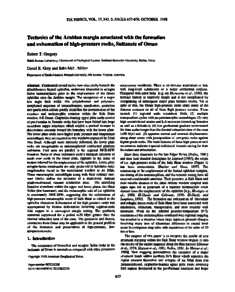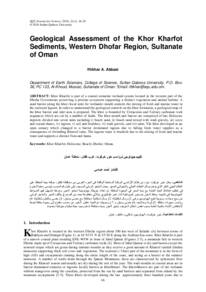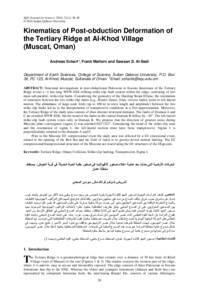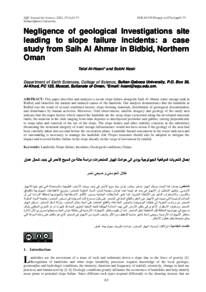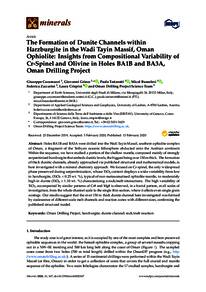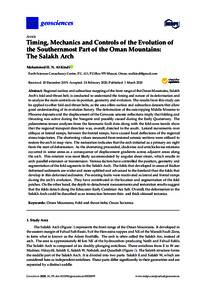وثيقة
Tectonics of the Arabian margin associated with the formation and exhumation of high-pressure rocks, Sultanate of Oman.
المعرف
DOI: 10.1029/98TC02206
المصدر
Tectonics. v. 17, 5, p. 657-670
المساهمون
Gray, David R. , مؤلف
Miller, John McL. , مؤلف
الدولة
United States.
مكان النشر
Washington
الناشر
American Geophysical Union.
ميلادي
1998-10-01
اللغة
الأنجليزية
الموضوع
الملخص الإنجليزي
Continental crustal rocks, now structurally beneath the allochthonous Samail ophiolite, underwent blueschist to eclogite facies metamorphism prior to the emplacement of the Oman ophiolite onto the Arabian margin. The recognition of a major low angle fault within this polydeformed and polymetamorphosed sequence of metacarbonates, metabasites, quartzites and quartz mica schists greatly simplifies the interpretation of the structure and metamorphic zonation within the Saih Hatat window, NE Oman. Carpholite-bearing upper plate rocks consist of pre-Permian to Jurassic rocks that have been folded into large recumbent nappe structures which exhibit a marked increase in deformation intensity toward the boundary with the lower plate. The lower plate rocks have higher peak pressure and temperature assemblages; they are exposed in two windows separated by Jabal Abu Daud. Although more intensely deformed, the lower plate rocks are recognizable as metamorphosed continental platform sediments. Fold axes are parallel to the regional NNE-SSW lineation. Sense of shear indicators yield a transport direction of south over north in the lower plate, opposite to the sense of motion inferred for the emplacement of the ophiolite. Lower plate eclogite-facies metabasalts are only preserved in kilometer-scale megaboudins found in the easternmost window at As Sifah. These metamorphic assemblages along with their remnant east-west fabrics define the existence of a short-lived, Arabian platform-directed, nascent subduction zone. The stretching lineation elsewhere within the upper and lower plates, the Hatat Schist (the basement), and the metamorphic sole of the ophiolite is consistently NNE-SSW, suggesting that the exhumation of high-pressure metamorphic rocks of Saih Hatat is related to the ophiolite obduction. Exhumation of the high pressure rocks was accompanied by intense deformation involving regional-scale fold nappes in a convergent margin setting. The geotherm remained suppressed for a period (>30 Myr) greater than the thermal relaxation time of the crust. The geometric and thermal constraints from Oman may be applicable to the general problem of the formation and preservation of high-pressure, low-temperature rocks.
ISSN
0278-7407
قالب العنصر
مقالات الدوريات

